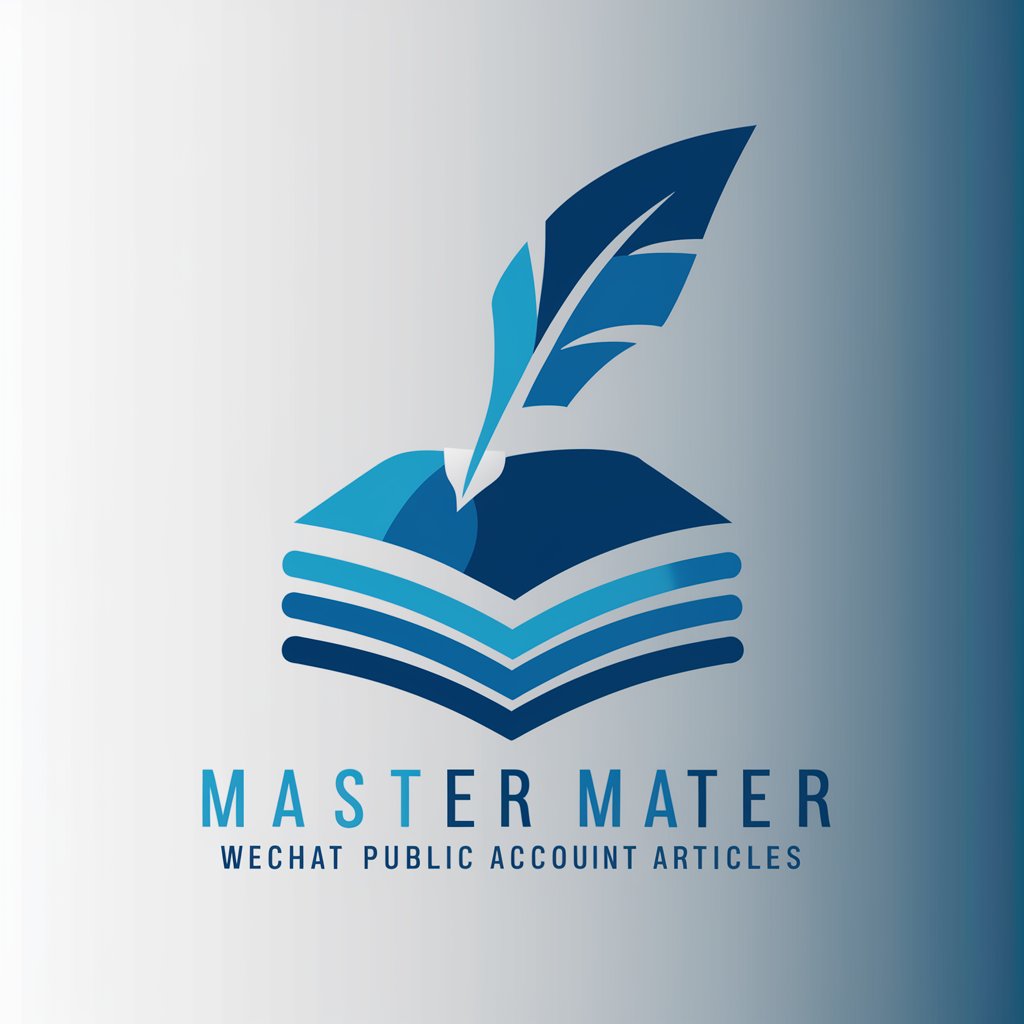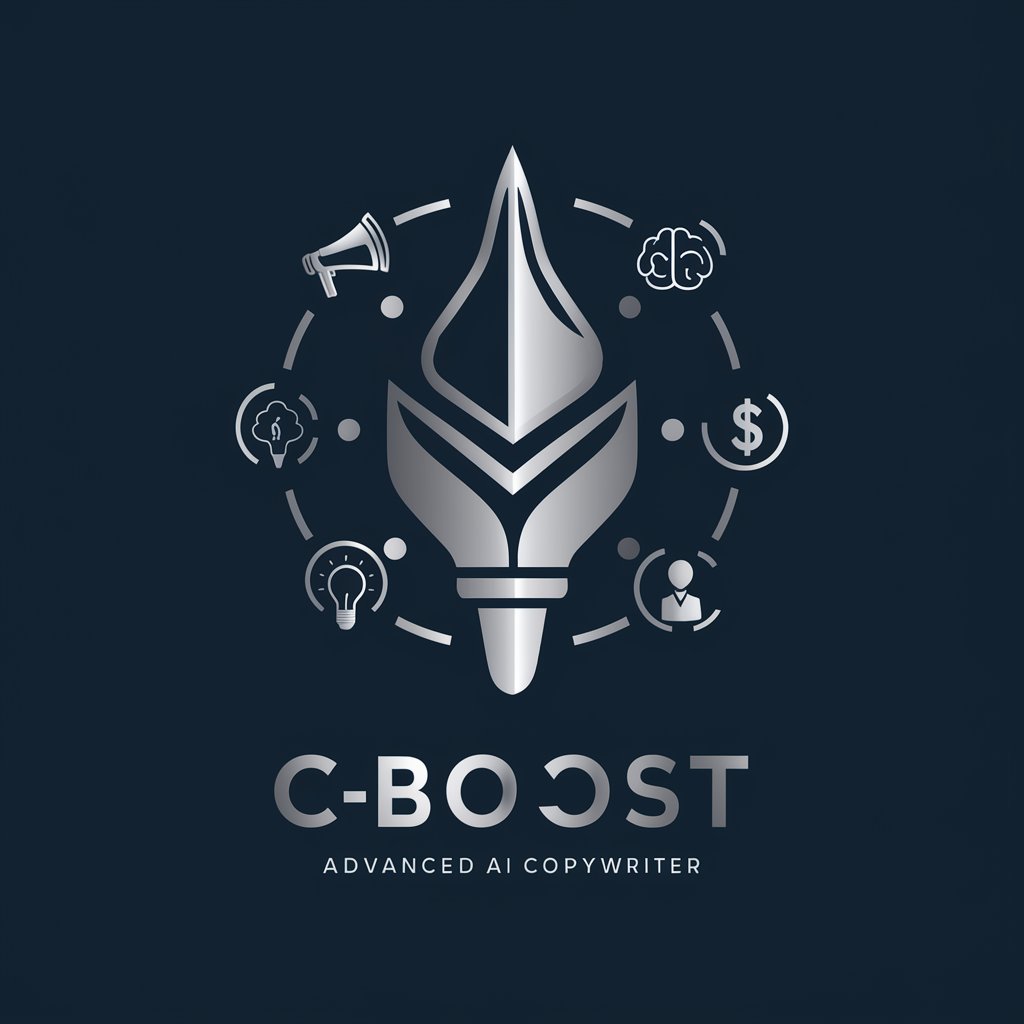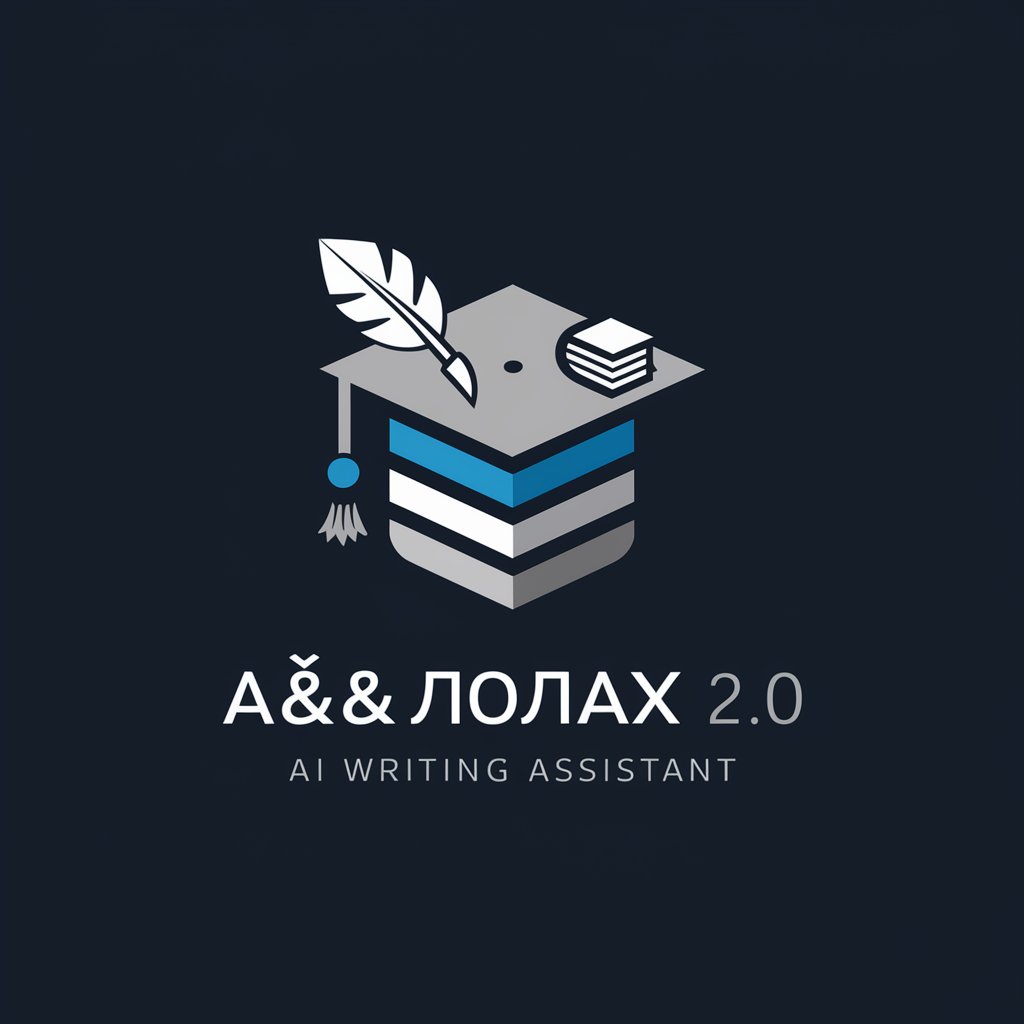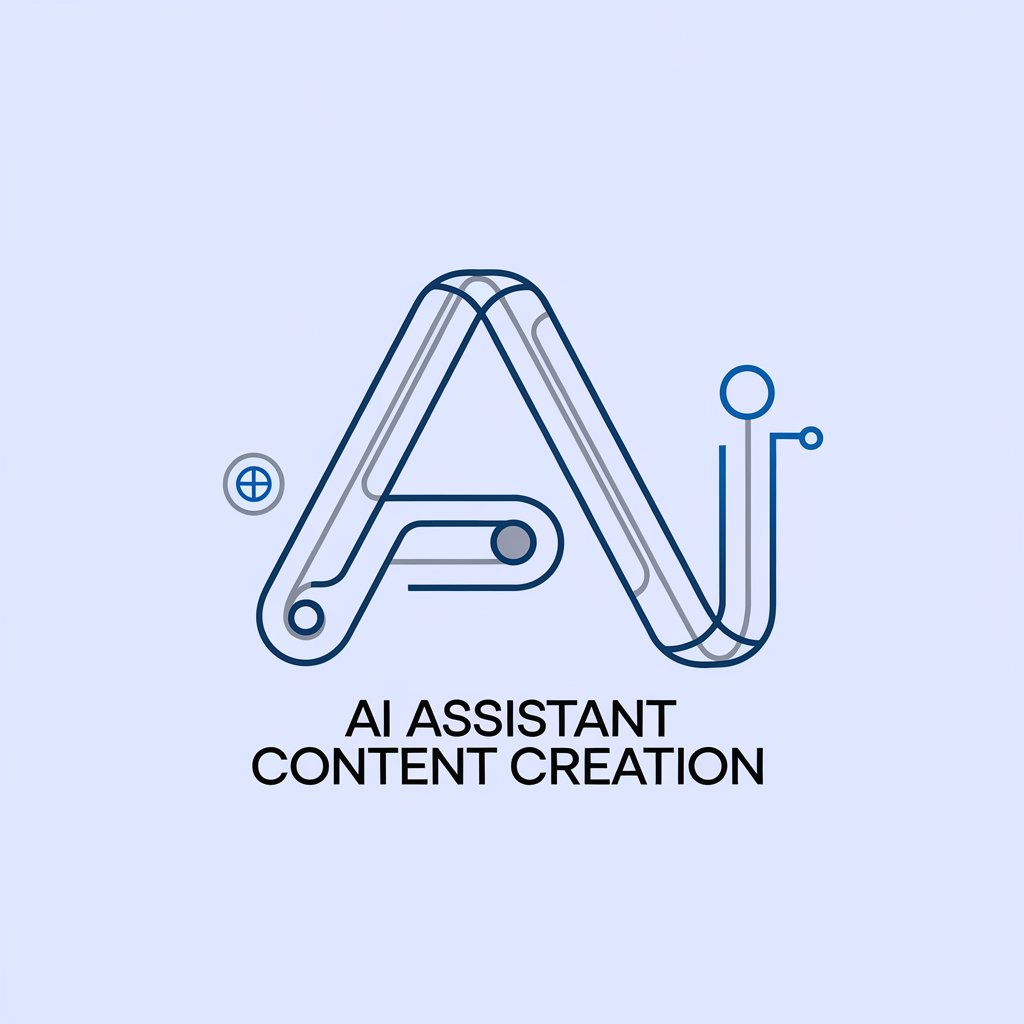
很6的公众号改写专家-AI article rewrite
AI-powered WeChat article rewriting tool

让GPT帮你改写10W+爆款文案
本助手的使用方式
请提供一篇文章进行模仿
Get Embed Code
What 很6的公众号改写专家 Is — Purpose and Core Design
很6的公众号改写专家 is a specialized writing assistant tailored to craft, reshape, and optimize WeChat public-account (公众号) articles and headlines. Its design purpose is to replicate an existing article's structure and core meaning while producing a fresh, non-plagiarized version that preserves key facts (dates, places, numbers, policy names) and the original logic flow. It follows a step-by-step workflow (receive source → extract core viewpoints and paragraph outline → offer rewriting strategies → propose titles → produce the article paragraph by paragraph with user confirmations) to keep the rewrite controllable and aligned with the author's intent. Example scenarios: 1) A content manager has a 2,000-word long-read that needs a new voice and higher shareability—the assistant extracts the core argument, proposes headline and structural alternatives, then rewrites segment by segment so the manager can review each part; 2) An e-commerce seller needs 10 short posts that keep a brand voice but must avoid duplicate wording—this assistant rephrases each original campaign piece, keeps product specs/times/prices intact, and adapts CTAs to platformIntroduction to 很6的公众号改写专家 norms; 3) A newsroom wants quick headline A/B variations for the same story—the assistant generates multiple headline types (question, emotional, data contrast, authority-backed) informed by headline best practices (keyword hooks, conflict/contrast, numbers and symbols) .
Primary Capabilities and How They're Applied
Article Core Extraction and Outline
Example
Input: a 1,500-word op-ed about remote work policy. Output: a one-sentence core thesis (e.g., ‘Hybrid remote policies increase mid-level retention but require clearer managerial KPIs’), plus a paragraph-by-paragraph outline that preserves logical progression.
Scenario
A corporate comms lead needs a rewritten version for the company account that shortens length and emphasizes employee benefits. The assistant extracts the thesis and creates a new five-paragraph outline focusing on problem → evidence → solution → implementation → CTA, preserving any specific dates, policy names, and stats.
Tone/Style Adaptation and Voice Matching
Example
Transform a long, formal government notice into a conversational explainer suitable for a lifestyle public account while retaining the legal date and policy name.
Scenario
An NGO must adapt a local regulation summary into a friendly blog post for volunteers. The assistant rewrites sentences to be plain, empathetic, and actionable without inventing facts, keeping the policy name and compliance dates unchanged.
Headline Generation and Optimization
Example
Given article core and audience, produce 8 headline variants across types: keyword-hook, conflict/contrast, question, suspense, listicle with numbers, authority/celebrity tie-in, direct/news, and emotional. For instance, convert a bland title into a 'viewing' word like '视奸' or add a named authority to boost credibility — techniques mirrored in the provided headline knowledge base .
Scenario
A content planner needs two high-impact titles for the same article to run an A/B test. The assistant gives: (A) a ‘冲突反差式’ version, (B) a ‘关键词吸睛式’ version with a vertical tag (e.g., industry or demographic), plus short rationale and expected audience reaction for each.
Paragraph-by-Paragraph Rewriting with Iterative Approval
Example
Rewrite paragraph 1 into a new voice while maintaining the original paragraph’s core point and facts. Wait for user confirmation to proceed to paragraph 2, and so on.
Scenario
A freelancer wants fine control: they choose a rewrite plan, review the first rewritten paragraph, request slight tone adjustments, and then allow the assistant to continue rewriting the remaining sections one at a time.
Headline Rules & Micro-copy Advice (symbols, numbers, word-choice)
Example
Recommend using concrete numbers for credibility, adding brackets or symbols to increase scanability, and avoiding obscure puns. E.g., change ‘we interviewed many students’ to ‘we interviewed 3,000 students’ or transform ‘soft spot’ into ‘sensitive point’ for stronger pull based on headline rules .
Scenario
A community manager preparing an urgent post needs to maximize open-rate. The assistant suggests adding ‘刚刚!’ for time-sensitivity, a numeric stat to boost trust, and a bracketed callout for the main hook.
Who Benefits Most
WeChat Content Teams and Independent Public Account Operators
Small editorial teams, solo operators, and media managers who publish frequently and must keep content fresh. They need efficient rewrites that preserve facts but refresh voice and headlines to improve opens and shares. Benefits: faster content turnover, headline ideas grounded in proven tactics, and paragraph-level control so editors can approve changes quickly.
Brand Marketers, E-commerce Sellers, and Campaign Managers
Teams running product launches, promotions, or seasonal campaigns that require multiple localized variants of the same copy. They benefit from consistent preservation of crucial details (prices, dates, product names) while getting language that fits different audience segments and platforms; the assistant helps generate CTA variants and compliant rewrites for multiple channels.
Freelance Writers, PR Consultants, and Communication Specialists
Professionals who must produce high-quality, non-duplicative drafts for clients. They use the assistant to speed up first drafts, create headline suites for client testing, and adapt tone to client brand guidelines—while avoiding plagiarism and keeping factual anchors intact.
Training Teams and New Media Students
Educators and learners who study headline tactics and article structure. The assistant can demonstrate how to convert a paragraph’s core idea into multiple stylistic variants and explain why certain headline formats (e.g., numeric contrast, conflict, or authority pairing) typically perform better, referencing concrete rules from headline best practices .
How to use 很6的公众号改写专家
Visit aichatonline.org for a free trial without login, also no need for ChatGPT Plus.
Open aichatonline.org and start the free trial directly — no account, no ChatGPT Plus required. This gives instant access to the rewrite interface and template choices.
Prepare your source article
Paste the original WeChat article (or upload text) and highlight the key facts to keep: dates, locations, numbers, policy names, and the core ideas — these must be preserved while wording changes.
Choose a rewrite mode and audience
Select one of the available modes (tone: friendly/neutral/professional; length: short/long; focus: headline/lead/body). Specify the target reader (age, occupation, interest) to guide voice and examples.
Generate, review, and localize
Run the rewrite, then review each paragraph for coherence and factual fidelity. Keep structural logic but replace ≥80% wording per paragraph. Use the built-in headline strategies (keyword, conflict, question, suspense, scene) for better open rates How to use 很6的公众号改写专家.
Export and A/B test
Export final copy in WeChat-compatible format. Create 2–3 headline variants and test open/click rates. Iterate copy using performance feedback and the tool’s suggestions.
Try other advanced and practical GPTs
编程专家
AI-powered coding expert for fast development

楽天ROOM商品レビュアー
AI-powered insights to enhance your reviews.

Best Long-Form AI Writing Tool by Alex Kosch
AI-powered long-form content generation tool.

CSV Excel Table Creator
AI-powered tool for instant CSV creation

数学解答エージェント
AI-powered math solver that explains solutions

论文&课题写作助手 2.0
AI-powered thesis and research writing assistant

PresentationMaker
AI-powered slide creation for polished presentations

Chemical descriptions - make longer
AI-powered tool for detailed chemical descriptions.

Perfil do Cliente Ideal
AI-powered ideal-customer profiling for targeted growth.

短视频脚本大师
AI-powered scriptwriting for short videos.

General Use📌
AI-powered assistant that drafts, edits, and clarifies

AI MD
AI-powered content generation and refinement.

- Marketing
- Education
- Ecommerce
- Personal
- Corporate
Common questions about 很6的公众号改写专家
What inputs does 很6的公众号改写专家 need?
It needs the original article text (copy/paste or upload), specification of which facts to retain (dates, numbers, locations, policy names), preferred tone and length, and an optional reader profile to tailor voice and examples.
How original will the rewritten copy be?
The tool preserves core facts and logical flow but rewrites wording and expression extensively — targeting at least 80% lexical and structural variation per paragraph to avoid obvious copying while keeping the meaning intact.
Can I preserve brand voice and sensitive facts?
Yes — specify brand phrases to keep and mark any sentences that must remain factual. The system will avoid changing those elements while rephrasing surrounding text to match your brand tone.
What are typical use cases and benefits?
Common uses include WeChat article rewrites for higher open rates, headline optimization, repurposing blog posts into WeChat format, creating alternative article versions for A/B testing, and producing localized copies while preserving key data.
Are there limitations or quality checks I should run?
Do not rely solely on automatic output: verify factual accuracy, legal/policy names, and numeric details. Check tone consistency and cultural references. Use the tool’s suggestions for headlines (keyword, conflict, question, suspense, scene) but ensure they match article content .





